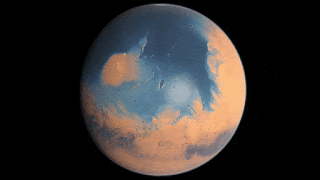Was Mars also like Earth?
Scientists believe that a few billion years ago, Mars was a human habitable planet just like our Earth, where it has clouds, winds, a roughly 24-hour day, seasonal weather patterns, polar ice caps, volcanoes, canyons, and other familiar features.
A Billion Years Ago:
To comprehend the possibility of Mars being Earth-like, we must delve into its ancient history. Approximately four billion years ago, both Earth and Mars were young, rocky planets with active geological processes. Both planets boasted liquid water on their surfaces and potentially harbored the conditions suitable for life to emerge.
Mars, like Earth, likely had a thicker atmosphere, shielding its surface from harmful solar radiation and providing the necessary pressure for water to exist in its liquid state. Evidence from geological features, such as ancient river valleys, lake beds, and minerals formed in the presence of water, suggests that Mars was once a wet and hospitable environment.
Climate Evolution:
However, around three billion years ago, Mars experienced a drastic transformation. Geological evidence indicates that its magnetic field weakened, leaving the planet vulnerable to the harsh solar wind. Without the protection of a robust magnetic field, Mars gradually lost its atmosphere to space, resulting in a significant drop in atmospheric pressure.
With the loss of its protective atmosphere, Mars underwent a dramatic cooling process, causing its surface water to freeze or evaporate into space. The once-dynamic hydrological cycle ceased, leaving behind dry river channels and dried-up lake beds as remnants of its watery past.
Comparisons to Earth:
Despite these changes, the parallels between Mars and Earth's early history are striking. Both planets experienced volcanic activity, tectonic processes, and the presence of liquid water on their surfaces. Geological features such as sedimentary layers, impact craters, and volcanic formations bear witness to the dynamic nature of Mars' past.
Furthermore, recent discoveries have unveiled the presence of organic molecules and complex chemistry on Mars, hinting at the potential for ancient microbial life. While the exact nature of these organic compounds remains a subject of ongoing research, their existence underscores the possibility that Mars was once a habitable world.



Comments
Post a Comment